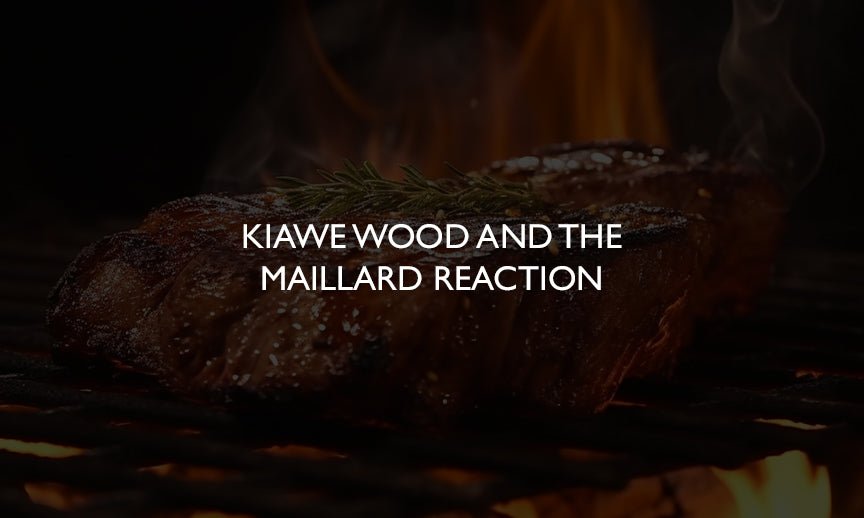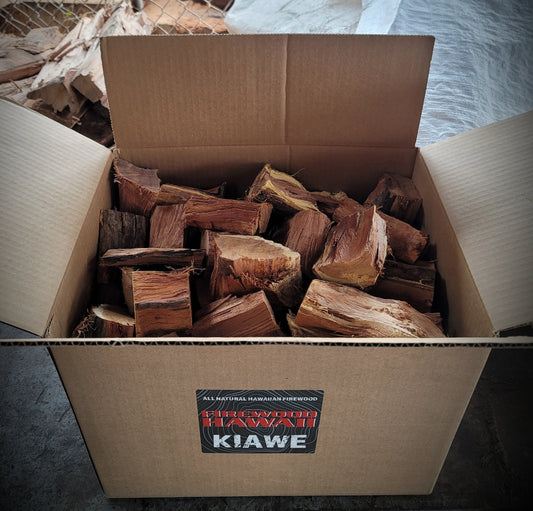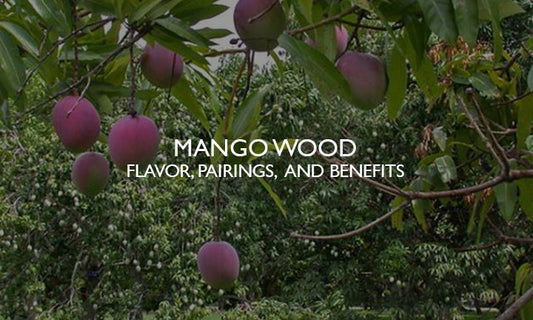For gastronomes and culinary enthusiasts around the world, there are few sensory experiences as delightful as the rich, smoky aroma and taste of food prepared over Kiawe wood.
The secret to this unique flavor profile lies not just in the wood itself, but in a complex chemical reaction known as the Maillard Reaction.
Today, we delve deep into the intricacies of how Kiawe wood influences the Maillard Reaction, enhancing the flavors of your grilled and smoked delicacies.
Understanding the Maillard Reaction
Named after French chemist Louis-Camille Maillard who first described it in the early 20th century, the Maillard Reaction is a chemical reaction between amino acids and reducing sugars.
This occurs when food is heated above 140-165 degrees Fahrenheit, leading to browning and flavor development.
This reaction is responsible for the flavorful crust on a grilled steak, the golden hue on a roast chicken, or the dark crust of baked bread.

Kiawe Wood: A Flavor Catalyst
How does Kiawe wood tie into this?
The answer lies in the smoke.
When Kiawe wood is heated, it produces smoke that's rich in compounds like phenols, carbonyls, and acids.
These compounds interact with the food surface, resulting in two significant effects:
1.Flavor Infusion
The smoky flavor from the phenolic compounds infuses into the food, providing that distinctive smoky taste associated with wood-fire cooking.
2. Surface Alteration
The carbonyls and acids in the smoke contribute to surface drying, allowing the Maillard Reaction to occur more readily and create a flavorful crust.
Kiawe Wood and the Maillard Reaction: A Perfect Pairing
Kiawe wood amplifies the Maillard Reaction in a unique way.
The dense nature of this wood leads to a slower, more consistent burn, providing a steady supply of heat necessary for the Maillard Reaction to take place.
The high temperatures achieved enable the amino acids and sugars in the food to interact, leading to browning and the creation of complex flavor molecules.
Moreover, the slightly tangy flavor profile of Kiawe wood smoke adds an extra layer of complexity to the food.
The sweet and smoky elements harmonize with the umami and roasted flavors created by the Maillard Reaction, enhancing the overall sensory experience.
Influence on Different Foods
The impact of Kiawe wood on the Maillard Reaction can be experienced differently across various foods:
1. Meat
Kiawe wood smoke helps form a dark, crispy bark on the meat, an outcome of the Maillard Reaction and caramelization.
The smoky flavor penetrates the meat, complementing the savory flavors produced by the reaction.
2. Fish
The Maillard Reaction is subtler in fish due to its lower protein content.
However, the smoke from Kiawe wood can form a flavorful crust on the surface, enhancing the mild flavors of the fish.
3. Vegetables
With high heat and Kiawe wood smoke, vegetables can undergo the Maillard Reaction, resulting in a sweet, smoky, and slightly charred flavor.
Conclusion
Kiawe wood's role goes beyond being just a heat source.
Its influence on the Maillard Reaction, coupled with the distinctive flavor it imparts, elevates the art of grilling and smoking.
Understanding this interplay is akin to uncovering the scientific beauty of culinary arts.
It not only enhances our cooking techniques but also deepens our appreciation for the gourmet symphony that is a perfectly grilled piece of steak or a lovingly smoked fish, a testament to the delightful dance between Kiawe wood and the Maillard Reaction.












